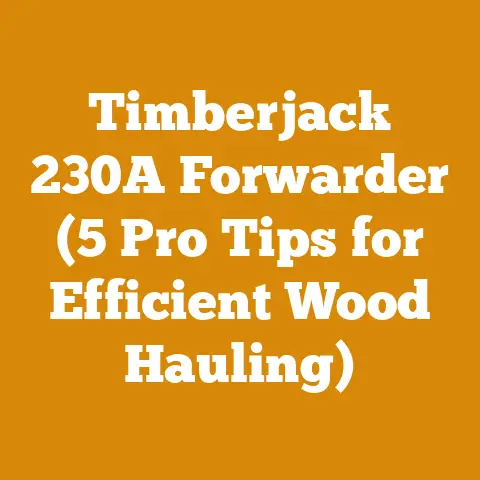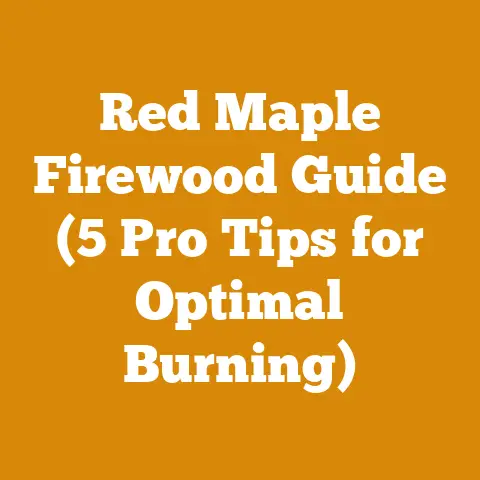Wood Purlin Dimensions Guide (Optimizing Strength & Durability)
Wood Purlin Dimensions Guide (Optimizing Strength & Durability)
The construction world is experiencing a fascinating shift. We’re seeing a renewed interest in timber construction, driven by sustainability concerns and a desire for buildings with character. Wood purlins, those horizontal structural members supporting roof loads, are at the heart of this trend. But understanding their dimensions for optimal strength and durability is crucial. This guide isn’t just about numbers; it’s about building smarter, safer, and with an eye toward long-term performance.
Understanding Wood Purlins: Function and Load Considerations
Wood purlins are horizontal structural members in a roof that support the common rafters or sheathing. They transfer the roof load to the main supports, such as walls or beams. Their primary function is to resist bending caused by the weight of the roofing materials (shingles, metal, etc.), snow load, wind load, and any other imposed loads.
Types of Loads Affecting Purlins:
- Dead Load: The weight of the roofing materials themselves (sheathing, shingles, etc.). This is a constant, predictable load.
- Live Load: Variable loads such as snow, rain, wind, and even maintenance personnel walking on the roof. Live loads are dynamic and can change significantly depending on the location and time of year.
- Wind Load: Wind exerts both positive (pressure) and negative (suction) forces on a roof. The design must account for both.
- Snow Load: The weight of accumulated snow, which varies greatly depending on geographic location and roof slope.
- Seismic Load: In earthquake-prone areas, seismic forces must also be considered in the design.
Span and Spacing: Interconnected Factors
The span of a purlin is the distance between its supports. The spacing is the distance between adjacent purlins. These two factors are intimately linked. A longer span requires a larger purlin dimension to support the same load. Conversely, closer spacing between purlins allows for smaller purlin dimensions.
Example: If you increase the span of your purlins by 25%, you’ll likely need to increase the depth (height) of the purlin significantly to maintain the same load-bearing capacity. A rough rule of thumb is that the depth should increase by the square root of the span increase. So, in this case, the depth might need to increase by approximately 12.5% (the square root of 1.25 is approximately 1.125).
Choosing the Right Wood Species: Strength and Durability
The species of wood you choose has a significant impact on the required dimensions of your purlins. Different wood species have different strength properties, including bending strength, shear strength, and modulus of elasticity.
Common Wood Species for Purlins:
- Douglas Fir: A strong, readily available, and relatively inexpensive softwood. It’s a popular choice for a wide range of construction applications.
- Southern Yellow Pine: Another strong softwood, often used in construction. It is generally more affordable than Douglas Fir, but can be more susceptible to rot if not properly treated.
- Spruce-Pine-Fir (SPF): A group of species often sold together, offering a good balance of strength and cost. It is generally less strong than Douglas Fir or Southern Yellow Pine.
- Western Red Cedar: Naturally rot-resistant, but not as strong as Douglas Fir or Southern Yellow Pine. It’s a good choice where moisture is a concern, but may require larger dimensions.
- Oak (White Oak): A hardwood known for its strength and durability. It’s more expensive and harder to work with than softwoods, but offers excellent performance in demanding applications.
Strength Properties: A Deeper Dive
- Bending Strength (Fb): The ability of the wood to resist bending stresses. Higher Fb values mean the wood can support more weight before bending or breaking.
- Shear Strength (Fv): The ability of the wood to resist forces that cause it to slide or shear along its grain. Important for resisting loads near supports.
- Modulus of Elasticity (E): A measure of the wood’s stiffness. Higher E values mean the wood will deflect less under load.
- Specific Gravity: The ratio of the density of the wood to the density of water. A higher specific gravity generally indicates a denser, stronger wood.
Data: Let’s compare some common species based on their design values (values obtained from the National Design Specification (NDS) for Wood Construction):
| Wood Species | Bending Strength (Fb) (psi) | Shear Strength (Fv) (psi) | Modulus of Elasticity (E) (psi) | Specific Gravity |
|---|---|---|---|---|
| Douglas Fir-Larch | 1500 | 180 | 1,600,000 | 0.50 |
| Southern Yellow Pine | 1400 | 175 | 1,500,000 | 0.55 |
| Spruce-Pine-Fir (SPF) | 850 | 150 | 1,300,000 | 0.42 |
| Western Red Cedar | 775 | 135 | 800,000 | 0.32 |
| White Oak | 1430 | 150 | 1,800,000 | 0.68 |
Note: These values are for illustrative purposes only and may vary depending on grade and specific species within the group. Always consult the NDS for accurate design values.
Personal Story: I once worked on a project where the client insisted on using Western Red Cedar for the purlins due to its natural beauty and resistance to decay. While it was a beautiful choice, we had to significantly increase the purlin dimensions compared to what would have been required with Douglas Fir to ensure adequate load-bearing capacity. This highlights the importance of considering both aesthetic preferences and structural requirements when selecting a wood species.
Durability and Treatment: Protecting Your Investment
Even strong wood can be susceptible to decay, insect attack, and fire. Proper treatment and detailing can significantly extend the lifespan of your purlins.
- Pressure Treating: Infusing wood with preservatives under pressure to protect it from rot and insects. This is a common practice for wood used in exposed or damp conditions.
- Borate Treatment: A less toxic alternative to pressure treating, effective against insects and decay. It’s suitable for interior applications or wood that is protected from the weather.
- Fire Retardant Treatment: Reduces the flammability of wood, providing valuable time for evacuation in case of a fire.
- Proper Detailing: Designing the structure to minimize moisture accumulation and promote air circulation. This includes providing adequate overhangs, flashing, and ventilation.
Cost Considerations: Pressure-treated lumber typically costs 15-30% more than untreated lumber. Fire-retardant treated lumber can cost 50-100% more. While these treatments add to the initial cost, they can save you significant money in the long run by preventing costly repairs or replacements due to decay or insect damage.
Calculating Purlin Dimensions: A Step-by-Step Guide
Determining the appropriate dimensions for your wood purlins requires a careful analysis of the loads, span, spacing, and wood species. The following is a simplified step-by-step guide. Consult a qualified structural engineer for complex projects or if you are unsure about any aspect of the design.
Step 1: Determine the Loads
- Dead Load: Calculate the weight of the roofing materials per square foot. You can find this information from the manufacturer’s specifications.
- Live Load: Consult your local building codes for the required live load based on your geographic location and roof slope. Snow load is often the dominant live load.
- Wind Load: Determine the wind load based on your location, building height, and exposure category. Your local building codes will provide guidance on this.
Step 2: Calculate the Total Load
Add the dead load, live load, and wind load to determine the total load acting on the purlin. Remember to consider the worst-case scenario (e.g., maximum snow load combined with wind load).
Step 3: Determine the Tributary Width
The tributary width is the area of the roof that is supported by a single purlin. It is equal to the spacing between the purlins.
Step 4: Calculate the Load per Linear Foot
Multiply the total load per square foot by the tributary width to determine the load per linear foot acting on the purlin.
Step 5: Select a Wood Species and Grade
Choose a wood species and grade based on your budget, strength requirements, and desired appearance. Consult the NDS for design values for the selected species and grade.
Step 6: Determine the Required Section Modulus (S)
The section modulus is a geometric property of the purlin’s cross-section that relates to its resistance to bending. It can be calculated using the following formula:
S = (5 * w * L^2) / (4 * Fb)
Where:
- S = Section Modulus (in^3)
- w = Load per linear foot (lbs/ft) – Convert to lbs/inch by dividing by 12
- L = Span of the purlin (ft) – Convert to inches by multiplying by 12
- Fb = Bending Strength of the wood (psi)
Step 7: Choose a Purlin Size
Select a purlin size that has a section modulus equal to or greater than the required section modulus. You can find the section modulus for standard lumber sizes in the NDS or online resources.
Example Calculation:
Let’s say we have the following parameters:
- Span (L): 12 feet
- Spacing: 4 feet
- Total Load: 50 lbs/sq ft
-
Wood Species: Douglas Fir-Larch (Fb = 1500 psi)
-
Load per linear foot (w): 50 lbs/sq ft * 4 ft = 200 lbs/ft
- Convert units:
- L = 12 ft * 12 in/ft = 144 inches
- w = 200 lbs/ft / 12 in/ft = 16.67 lbs/in
- Calculate Required Section Modulus (S):
S = (5 * 16.67 lbs/in * (144 in)^2) / (4 * 1500 psi)
S = (5 * 16.67 * 20736) / 6000
S = 1728 in^3
Looking at standard lumber sizes, a 4×12 (actual dimensions 3.5″ x 11.25″) has a section modulus of approximately 46.7 in^3, which is significantly larger than the required 1728 in^3. This indicates that a smaller purlin size could be used. A 2×12 (actual dimensions 1.5″ x 11.25″) has a section modulus of approximately 21.1 in^3. Still smaller.
Important Note: This is a simplified example. A complete design would also need to consider shear strength, deflection, and other factors. Always consult a qualified structural engineer for accurate design.
Deflection Considerations
Deflection refers to the amount a purlin bends under load. Excessive deflection can cause problems with the roofing materials and can be visually unappealing. Building codes typically limit the amount of allowable deflection.
- Allowable Deflection: A common rule of thumb is to limit deflection to L/240, where L is the span of the purlin in inches.
- Calculating Deflection: Deflection can be calculated using the following formula:
Deflection = (5 * w * L^4) / (384 * E * I)
Where:
- Deflection = Maximum deflection (inches)
- w = Load per linear foot (lbs/in)
- L = Span of the purlin (inches)
- E = Modulus of Elasticity (psi)
- I = Moment of Inertia (in^4)
The Moment of Inertia (I) is another geometric property of the purlin’s cross-section that relates to its resistance to bending. You can find the moment of inertia for standard lumber sizes in the NDS or online resources.
If the calculated deflection exceeds the allowable deflection, you will need to increase the purlin size or reduce the span.
Cost Analysis: Balancing Strength and Budget
Choosing the right purlin dimensions involves a trade-off between strength, durability, and cost. Larger purlin sizes provide greater strength and reduce deflection, but they also cost more.
Material Costs:
- Lumber Prices: Lumber prices fluctuate significantly depending on market conditions, species, and grade. Stay updated on current lumber prices from your local lumberyard or online resources.
- Treatment Costs: As mentioned earlier, pressure treating and fire-retardant treatments add to the cost of the lumber.
- Waste Factor: Account for a waste factor when estimating lumber quantities. A 5-10% waste factor is typical.
Data: As of October 2024, the average price of Douglas Fir lumber is approximately $800 per thousand board feet (MBF). Pressure-treated Douglas Fir can cost $950-$1100 per MBF. These prices can vary significantly depending on location and grade.
Labor Costs:
- Installation Time: Larger purlins require more labor to install.
- Skill Level: Installing purlins requires carpentry skills. You may need to hire a qualified carpenter or contractor.
- Equipment Rental: You may need to rent equipment such as a crane or forklift to lift and position the purlins.
Data: The average hourly rate for a carpenter is $40-$60 per hour. Crane rental can cost $500-$1000 per day.
Optimization Strategies:
- Optimize Span and Spacing: Carefully consider the span and spacing of the purlins to minimize the required purlin size.
- Use Engineered Lumber: Engineered lumber products, such as laminated veneer lumber (LVL) or parallel strand lumber (PSL), offer higher strength and stiffness than solid sawn lumber. This can allow you to use smaller purlin sizes and reduce costs.
- Value Engineering: Work with a structural engineer to explore different design options and identify the most cost-effective solution.
Personal Story: On one project, we were able to reduce the overall cost of the roof structure by switching from solid sawn lumber purlins to LVL purlins. While the LVL purlins were more expensive per piece, their higher strength allowed us to increase the purlin spacing, resulting in fewer purlins overall and a lower total cost.
Building Codes and Regulations: Ensuring Compliance
It is essential to comply with all applicable building codes and regulations when designing and constructing your roof structure. Building codes specify minimum requirements for load-bearing capacity, deflection, and fire resistance.
- Local Building Codes: Consult your local building department for specific requirements in your area.
- National Design Specification (NDS) for Wood Construction: The NDS is the primary reference standard for wood design in the United States.
- International Building Code (IBC): The IBC is a model building code that is widely adopted throughout the United States and other countries.
Consequences of Non-Compliance: Failure to comply with building codes can result in fines, delays, and even the demolition of your structure. More importantly, it can compromise the safety of the building occupants.
Case Studies: Real-World Examples of Purlin Design
Let’s examine a few case studies to illustrate the principles discussed in this guide:
Case Study 1: Agricultural Building
- Project: A 40′ x 60′ agricultural building with a gable roof.
- Location: Rural Montana, with significant snow load.
- Design: Douglas Fir purlins spaced 4 feet apart, spanning 20 feet.
- Purlin Size: 4×12 (actual dimensions 3.5″ x 11.25″)
- Key Considerations: High snow load required larger purlin dimensions. Pressure-treated lumber was used to protect against decay.
Case Study 2: Residential Cabin
- Project: A small residential cabin with a shed roof.
- Location: Coastal Oregon, with high humidity.
- Design: Western Red Cedar purlins spaced 3 feet apart, spanning 12 feet.
- Purlin Size: 2×8 (actual dimensions 1.5″ x 7.25″)
- Key Considerations: Natural rot resistance of Western Red Cedar was important due to the humid environment. Smaller purlin dimensions were possible due to the shorter span and closer spacing.
Case Study 3: Commercial Building
- Project: A commercial building with a flat roof.
- Location: Urban California, with seismic considerations.
- Design: LVL purlins spaced 6 feet apart, spanning 30 feet.
- Purlin Size: 3.5″ x 14″ LVL
- Key Considerations: Long span required high-strength LVL purlins. Seismic forces were considered in the design.
These case studies demonstrate how purlin dimensions are tailored to the specific requirements of each project.
Visual Aids: Tables, Charts, and Calculators
Using visual aids can significantly enhance understanding and make calculations easier.
Table: Section Properties of Standard Lumber Sizes
| Nominal Size (inches) | Actual Size (inches) | Section Modulus (in^3) | Moment of Inertia (in^4) |
|---|---|---|---|
| 2×4 | 1.5 x 3.5 | 3.06 | 5.36 |
| 2×6 | 1.5 x 5.5 | 7.56 | 20.8 |
| 2×8 | 1.5 x 7.25 | 13.1 | 47.6 |
| 2×10 | 1.5 x 9.25 | 21.4 | 98.9 |
| 2×12 | 1.5 x 11.25 | 31.6 | 178 |
| 4×4 | 3.5 x 3.5 | 7.15 | 12.5 |
| 4×6 | 3.5 x 5.5 | 17.6 | 48.4 |
| 4×8 | 3.5 x 7.25 | 30.7 | 111 |
| 4×10 | 3.5 x 9.25 | 50.2 | 232 |
| 4×12 | 3.5 x 11.25 | 73.8 | 415 |
Note: These values are approximate and may vary slightly depending on the actual dimensions of the lumber.
Chart: Lumber Price Trends
(A chart showing the historical price trends of different lumber species, sourced from a reputable source like Random Lengths or the USDA Forest Service.)
Calculator: Online Purlin Size Calculator
(Link to an online purlin size calculator that allows users to input parameters such as span, spacing, load, and wood species to determine the required purlin size.)
Actionable Takeaways and Next Steps
Choosing the right wood purlin dimensions is crucial for ensuring the strength, durability, and safety of your structure. By understanding the factors influencing purlin size, selecting the appropriate wood species, and performing accurate calculations, you can optimize your design and minimize costs.
- Consult a Structural Engineer: For complex projects or if you are unsure about any aspect of the design, consult a qualified structural engineer.
- Obtain Local Building Codes: Obtain the latest version of your local building codes and ensure that your design complies with all applicable requirements.
- Stay Updated on Lumber Prices: Monitor lumber prices and consider different wood species and grades to optimize your budget.
- Consider Engineered Lumber: Explore the use of engineered lumber products for increased strength and reduced costs.
- Prioritize Durability: Protect your investment by using pressure-treated lumber or other appropriate treatments.
Final Thoughts: Building with wood is a rewarding experience that connects us to nature and provides us with durable and beautiful structures. By taking the time to understand the principles of purlin design, you can ensure that your structure stands the test of time. Remember, a well-designed and properly constructed roof is the first line of defense against the elements. So, take your time, do your research, and build with confidence!






